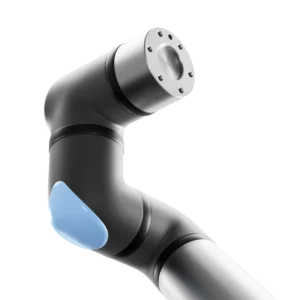Inline Gloss Measurement
Improve Your Gloss Measurement and Emboss Consistency
When you’re producing high-volume products (such as roll stock, extruded stock, flooring, wood, or glass), one of the most important considerations is product uniformity. This is particularly true in the flooring, textile, and building products industries, where maintaining consistency is a necessary part of avoiding downgraded products and high scrap levels.
A common means of texture analysis and thickness measurement for glossing applications is through a handheld glossmeter. While this can be an invaluable tool in performing spot-checks, gloss meters are prone to human error. In some cases, they can entirely miss substantial defects that comprehensive, traversing measurement solutions can easily detect. Even if not performed intentionally, operators can easily manipulate these handheld emboss consistency measurement devices. Further, when it comes to parameters such as texture analysis, curing/coating analysis, and data collection, handheld glossmeters can be ineffective at pin-pointing potential issues.
At Cross Company’s Automation group, we partner with many industrial manufacturers to implement closed-loop process control systems to track trends, reduce scrap, detect defects, and streamline manufacturing processes. If you work in flooring or any other industry where gloss and emboss are important considerations in finished-product quality, Cross has a solution. Contact one of our automation experts today or learn more about how we can help.
Automating Your Inline Gloss Measurements
Automation of inline gloss measurements offers a number of significant advantages over the handheld gloss measurement model. A primary benefit is the feeding of measurement data directly to your network and/or you SPC system for real-time visualization and closed-loop process control. This also allows for continuous monitoring and quick responses to any potential anomalies detected in the manufacturing process. The precise data captured helps you make informed decisions about your process, verifying that upstream processes such as curing and coating are functioning correctly.
Automating your inline measurements for glossing and embossing ensures that your operation achieves high product quality and consistency through every piece meeting the necessary standards. Further, the automated system’s ability to provide detailed analytics also facilitates proactive maintenance, identifying potential issues before they escalate into costly problems. This predictive capability can extend the lifespan of your equipment and maintain optimal operational performance.
With comprehensive data at your fingertips, you can continuously optimize your processes, improve product quality, and achieve greater customer satisfaction.
Real-Time Data Integration
Enhanced Decision-Making
Quality Assurance
Efficiency Boost
Regulatory Compliance
Thickness and Finish Inspection Systems With Data Feedback
There are many factors that automated traversing measurement systems with real-time data feedback can accurately measure and catalog. This includes gloss measurement, texture/etch/stamp/emboss measurement, and thickness measurement.
Gloss Measurement
We’ve optimized the workflows of many industrial operations struggling with gloss inconsistencies through automating measurement processes utilizing an industrially hardened gloss meter. These meters decrease measurement errors and variability and can be implemented anywhere within an existing process to allow for scalable integration.
Texture, Etch, Stamp, or Emboss Measurement
At Cross, we knew there was a more effective way to automate emboss consistency measurement on materials such as flooring. That’s why we created our own method utilizing the data from 2D lasers to measure emboss. Our proprietary software filters, levels, and summarizes raw data provided by the laser to provide real-time data to ensure consistency.
Thickness Measurement
The inline thickness measurement system developed by Cross is able to check for thickness consistency across the width of your product as it moves through your process. This provides the real-time data needed to adjust upstream processes quickly to avoid excessive scrap. If you’re only performing spot-checks with calipers, you may not be getting the full picture.

Process Improvements Through Continuous Monitoring
With raw material and labor shortages, it’s harder than ever for manufacturers to meet consumer demands. This is particularly evident in the flooring and building materials industries. Luckily, Cross has a solution.
At Cross, we offer a number of products, services, and solutions to keep your equipment operating properly, improve the quality of your product, streamline your throughput, reduce scrap, and implement automation to combat labor shortages.
Cross Company’s Automation group has been working directly with customers in the flooring industry to understand industry-specific challenges and create custom solutions to address those challenges. For instance, industrial automation for gloss measurement can eliminate problems before they occur and ensure your offering is consistent and well-regarded by target customers. These automation solutions also provide the data necessary to correct issues quickly, eliminate scrap, and use less raw materials.

Is Automation Right for Your Process?
Answer a few simple questions and find out! We’ll send a copy of your inputs to help build the case for automation, and determine ROI for automating parts of your operation.
Why Cross Inline Gloss Measurement?
At Cross, we design automation solutions for OEMs, commercial operations, manufacturers, and many other operations in the industrial world. And we provide those solutions utilizing cutting-edge automation technologies, industry-specific expertise, and a customer-focused approach that sets us apart. Our solutions are designed to address the unique challenges of your industry and provide you with the tools you need to set yourself up for success and apart from your competitors.
With customized industrial automation solutions, manufacturers are able to achieve new levels or productivity, create scalable processes, and future-proof their operations. At Cross Company, we work directly with you to allow your operation to streamline production, reduce cost, improve quality, and enhance safety.
Through a combination of industry-specific experience and world-class customer service, we can help your operation stay ahead of the curve and beat out your competition. In short, we help you create a more scalable, sustainable, and efficient production environment. Contact one of our experts today to get started and to learn more about the value Cross Company Automation can provide.

Related Automation Solutions
At Cross, we offer much more than just automated batching systems. We can also provide the solutions our OEM and other manufacturing partners need to succeed.
Check out our other automation solutions and see for yourself.

